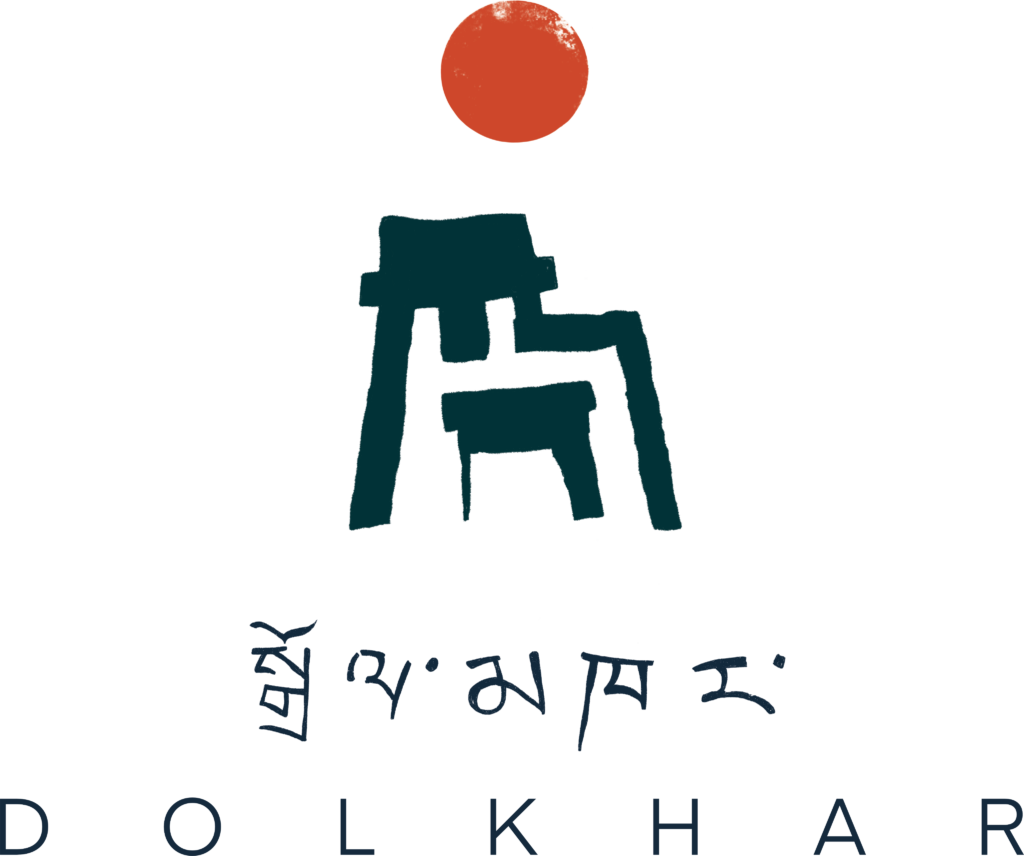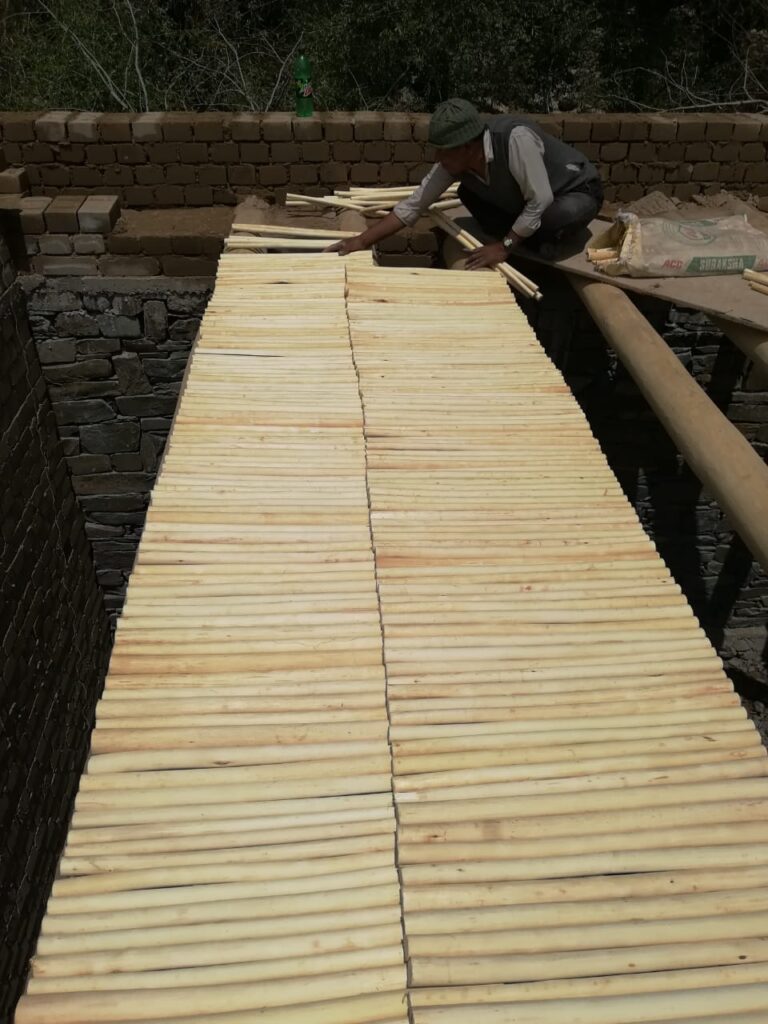Angchuk le has contributed to the art of Talu Dungma (gdung-ma) for half a decade.
Traditional ceilings in Ladakh’s vernacular architecture include a sequence of layers of wooden elements:
Primary beams- mardung (ma-gdung)
Secondary beams- dungma (gdung- ma)
Willow sticks- talu (dral-bu)
Mardung is the larger and longer beam employed. Its name shows its structural relevance, since ma means main. Mardung is made out of poplar. Dungma are secondary beams usually made of poplar (yerpa or ulath). The talu are willow sticks used above beams as structural elements, the last components of the horizontal structural system.
An odd number of dungma (gdung-ma) is usually put in each room. Odd numbers are often associated with happiness, while even numbers are related to unhappiness. Odd numbers are preferred because of certain astrological considerations related to Buddhist texts.
A call can take one to another era. As I asked Meme Angchuk le questions about his work as a sikpon and shingkan (mason/woodwork artist), I received answers that reflected wisdom that is either lacking or undervalued in today’s day and age. A phone call interview is a harsh reminder of the dystopian times that we are living in, and talking to Meme Angchuk le shed a light on his opinions on this dystopia as well as his reminiscences of his version of utopia of the traditional life of days gone by. Once again I was reminded of the irreplaceable value of the knowledge that the elderly have; knowledge that is today being subsumed in the avalanche of ‘modern education’.
He accurately laments how people are losing themselves and their culture in a bid to mimic lifestyles shown on television. In stark contrast, the beautiful talu (willow sticks) dungmas (wooden beams that are an integral part of Ladakh’s architecture) he has contributed to Dolkhar are a symbol not only of tradition but also of the relevance of traditional architecture to our climate.
Half a decade is no joke. Yet that is how long Meme Angchuk le has contributed towards the art of talu ldungma in Ladakh. At the age of 17 he started learning the art under the tutelage of Sankar Chhunpa. At 20 years he joined the Ladakh Scouts unit of the Indian Army. He left after 3-4 years to return to the vocation of his calling, that of a sikpon.
In a rather interesting take on the topic, he elaborated that he saw in himself the ability to help people as a sikpon. Being a sikpon he has been able to help numerous people build a place called home. He talked about how these days poor people who can’t afford a fancy house are thrilled when he changes the ka (wooden pillar in the house) for them. He has also contributed to enumerable challenging projects. Bringing the ruins of Rizong Gompa to renewal has been a result of his work. One can also marvel at his artistry manifested in the windows of the renovated Leh Masjid (mosque). He remarked that in order to change the roof of Tsemo Chamba (monastery), he had to apply his own genius. When asked what that can be attributed to, he humbly credited the teachings of his gergan (sikpon teacher). Lost in a world of ready made information we often don’t realize that work like that of a sikpon requires intelligence and aptitude; surely a visit to Dolkhar will make one realize the greatness of sikpon Meme Angchuk le.
He said that for the talu-ldungma at Dolkhar he taught a few gorkha (nepali workers) the art; which, owing to their tenacity they picked up quickly. Hence, Dolkhar is a manifestation not only of traditional art but also the dissemination of art for both cultural revival and employment opportunities. A small way to keep tradition alive even through a commercial venture.
True to Ladakh’s traditional architecture, Dolkhar’s masonry walls are built on a stone base, followed by compressed/ rammed (gyapak) earth brick walls. Walls are inclined in order for the building to appear like a natural element arising from the ground; a genius architectural wonder that can be witnessed in the Leh Palace as well. On the ceiling, dungma (wooden beams) support the chharlen (roof of brick or stone).
Angchuk le has many vocations besides that of a sikpon, among them are that of a tsempo (tailor) and even mo tapkan (divination practitioner). Moreover at the age of 70 he has seen Ladakh through various changes. He said, “These days of ‘fashion’ herald bad times. Too much fashion. Life is short. People base their lives on TV. Those days there was reverence for tradition. I live like those days. Semba Zangpo (peace of mind) is important, without that yontan (education) is no use. If one understands chhos (spirituality), life is easy. I’ve seen many people dying in a meditative pose because they could understand the mind.” These words require reflection. When you visit Dolkhar, be sure to hear these words reverberate. After all, where there is a talu, there is a tale.
Rinchen Angmo is an English Honours graduate of St. Stephen’s College. She is the founder of Raw Whispers Magazine and co-founder Rewa Sum.


